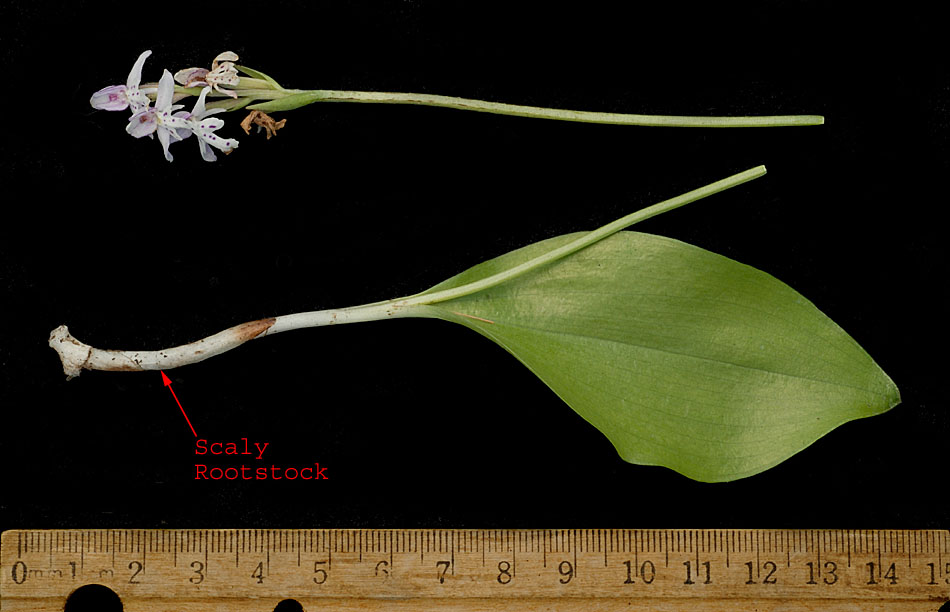 |
Amerorchis:
Answers to key questions in Lilies, Irises & Orchids of Saskatchewan
by Vernon L. Harms and Anna L. Leighton leading to this genus. The
answers are in the order you would normally work through the key.
 |
Plants
green, with at least some green leaf-blades, these sometimes early
withering or late developing; flowering stems green (pale pink to
purplish-red in Calypso bulbosa), bearing sheathing bracts in some
species; rootstocks not coral-like; capsules spreading to erect
(occasionally drooping when old); NOT [Plants non-green saprophytes
lacking leaf-blades; flowering stems yellowish to purplish-red or brown
(pale greenish-yellow in C. trifid), bearing sheathing bracts; rhizomes
rootless, coral-like in their branching; capsules drooping] |
 |
Flowers 3
or more in a spike-like inflorescence, small, often inconspicuous; lip
usually less than 1 cm long, but if longer, neither inflated nor broad
and flat; NOT [Flowers 1 to 2 per stalk (occasionally more in
Cypripedium reginae and C. montanum), large, showy; lip 1 cm long or
longer, either inflated or broad and flat] |
 |
Lip
spurred (spur short and bag-like in Coeloglossum viride) |
 |
Lip white
with roseate spots, ovate in outline with a pair of protruding lateral
lobes near base; terminal lobe flared and usually notched; flower stems
naked with a single leaf present at base of stalk and arising from
rhizomes with slender roots; NOT [Lip yellowish-green (often tinged with
red in Coeloglossum) or white, unmarked, narrower, tongue- or
strap-shaped, lacking lateral lobes; flower stems leafy (except in
Platanthera obtusata which has a single leaf at base of stem, and
Platanthera orbiculata, which has two leaves, both basal) arising from
clusters of thick roots] |
|
 |
Orchidaceae: Answers to key questions
in Budd's Flora leading to this family.
 |
plants NOT aquatic |
 |
flowers irregular; NOT [flowers regular] |
 |
perianth present, conspicuous, in two
series of 3 segments, often brightly colored; NOT [perianth absent or
inconspicuous] |
 |
perianth usually large, consisting of
sepals and petals usually alike, variously colored; NOT [perianth small,
consisting of 3 green sepals and 3 whitish petals] |
 |
petals NOT deciduous |
 |
stamens 1 or 2; NOT [stamens 3 or 6] |
|

